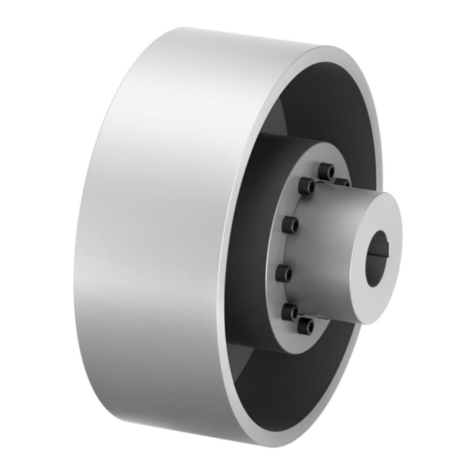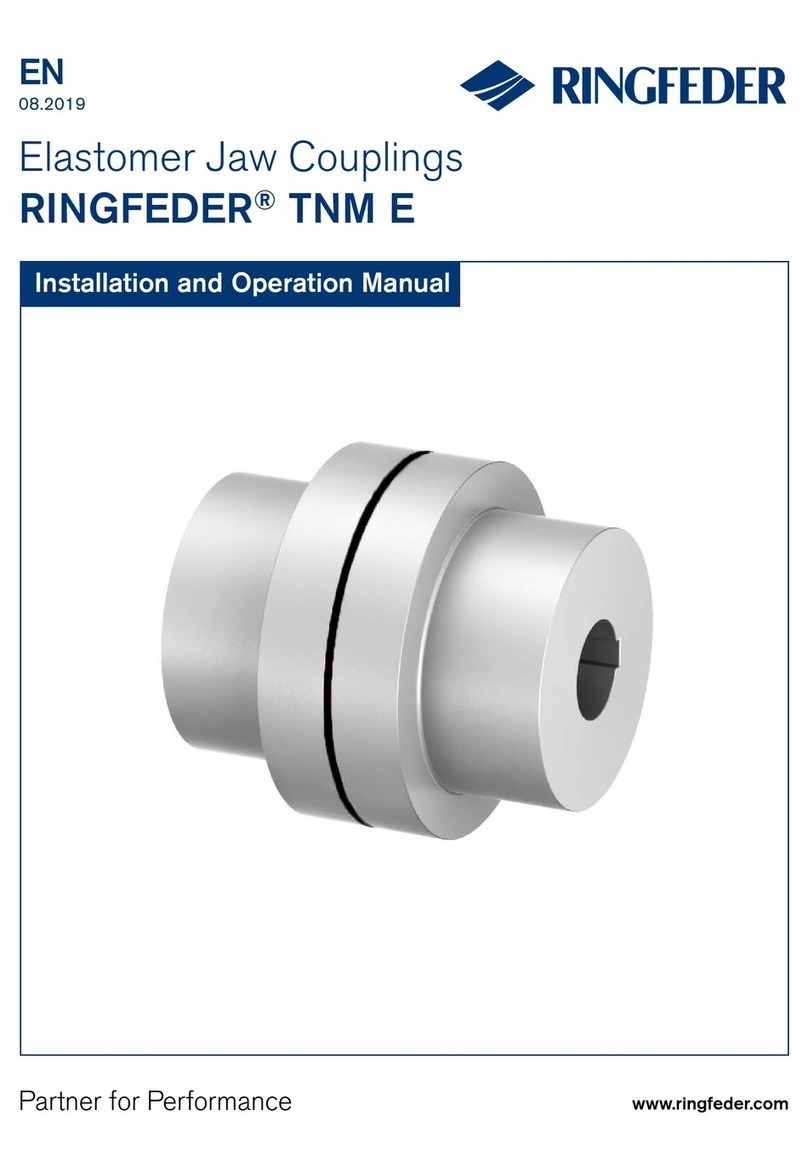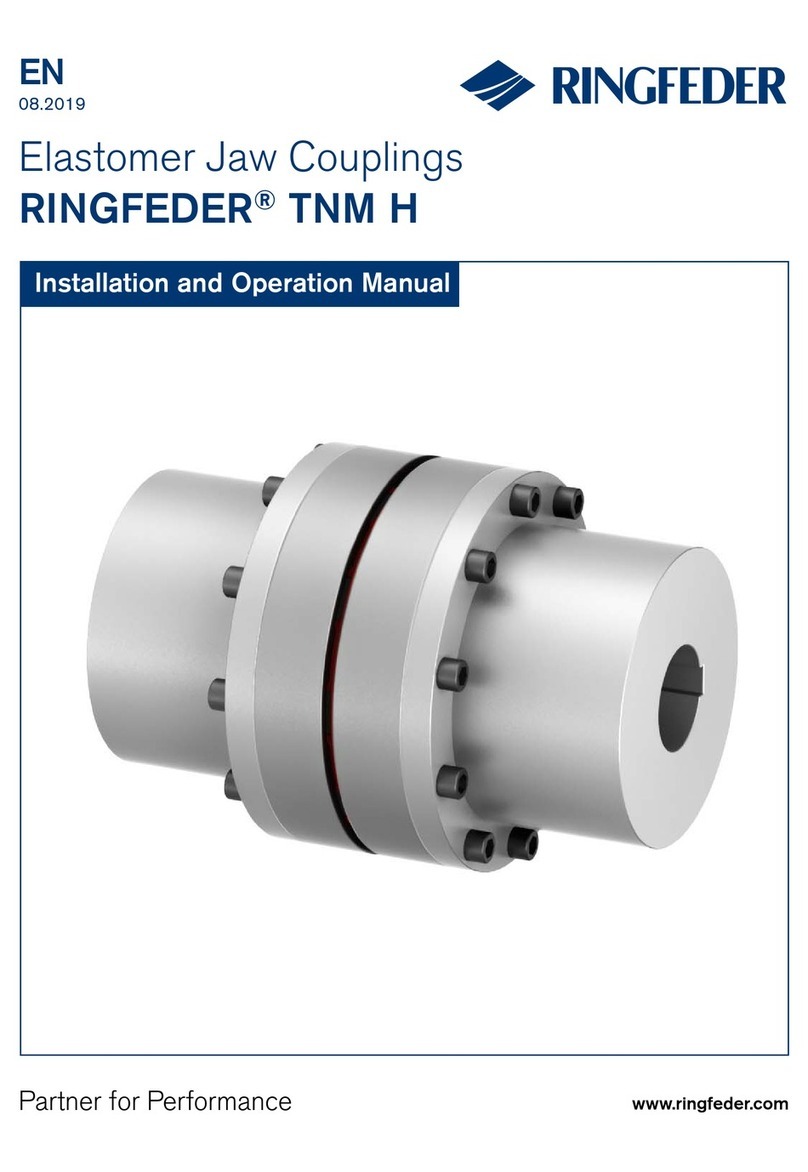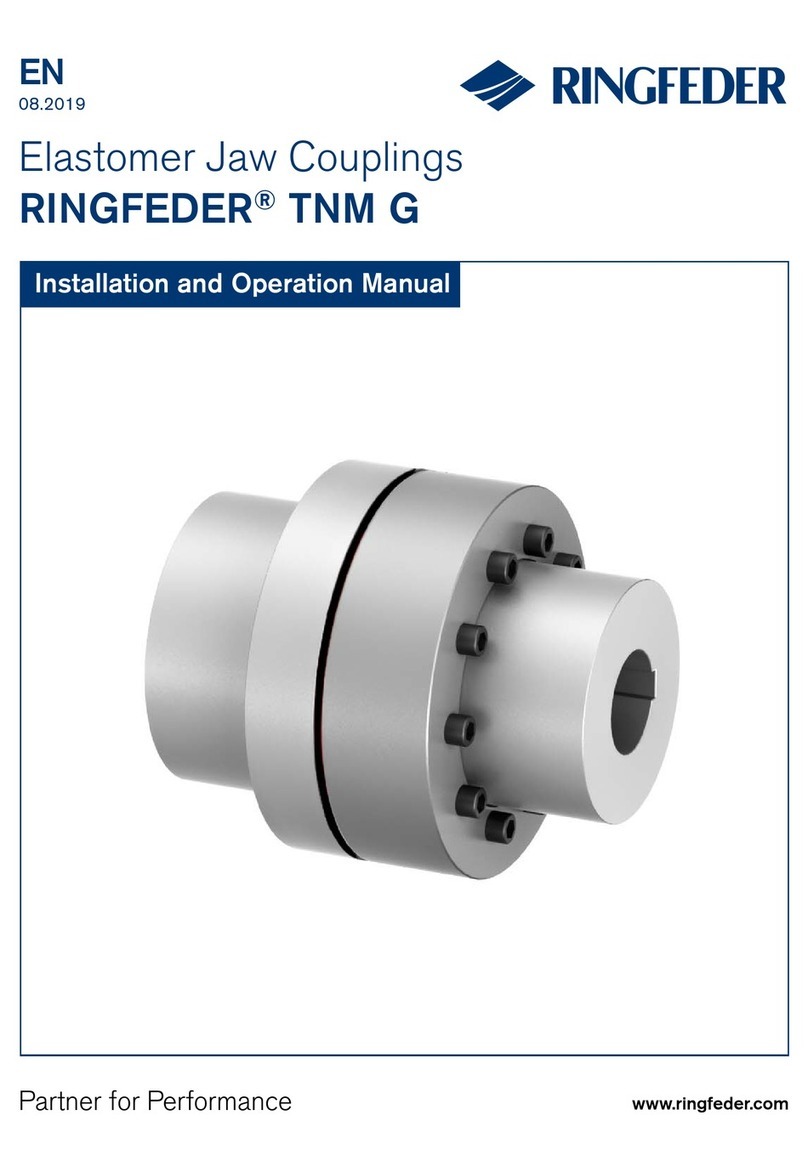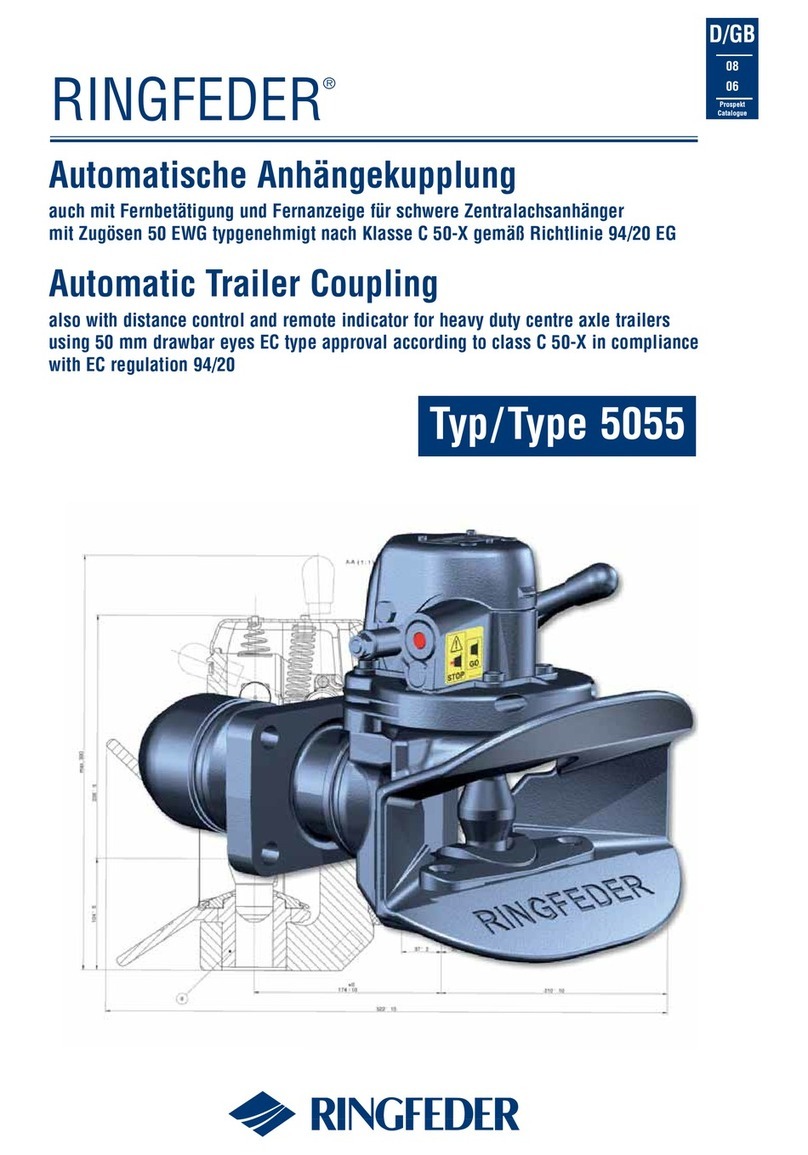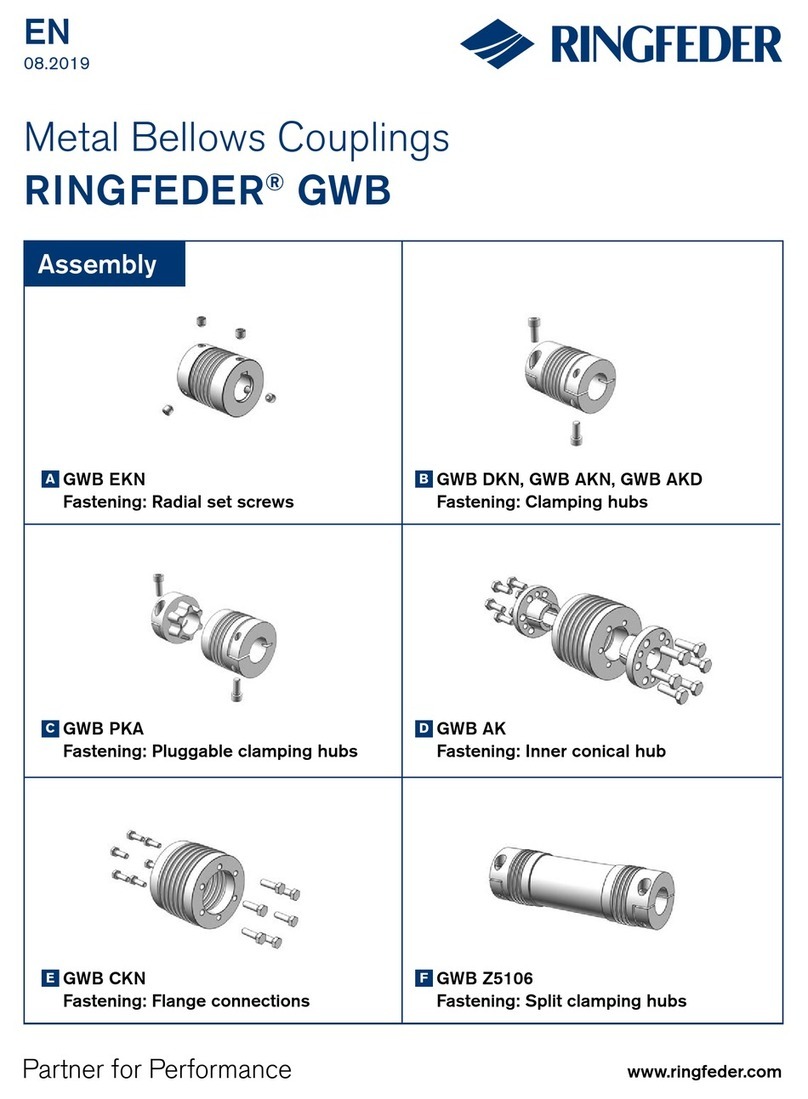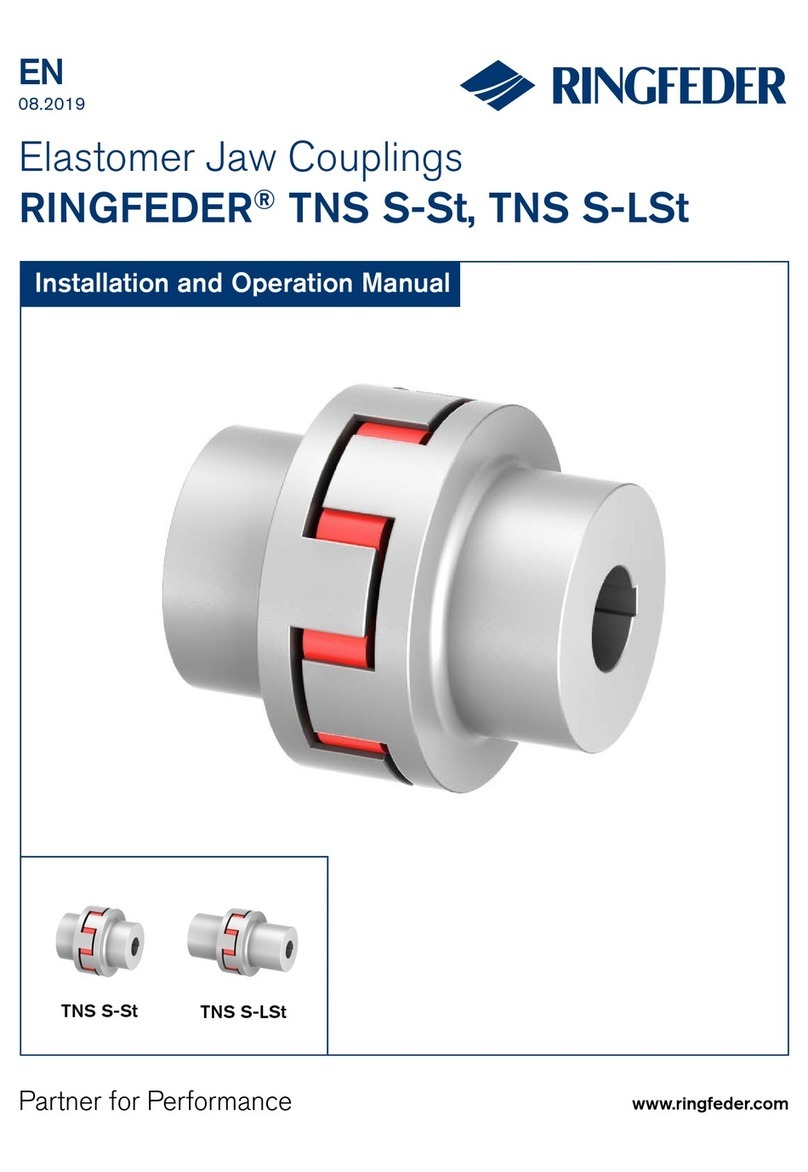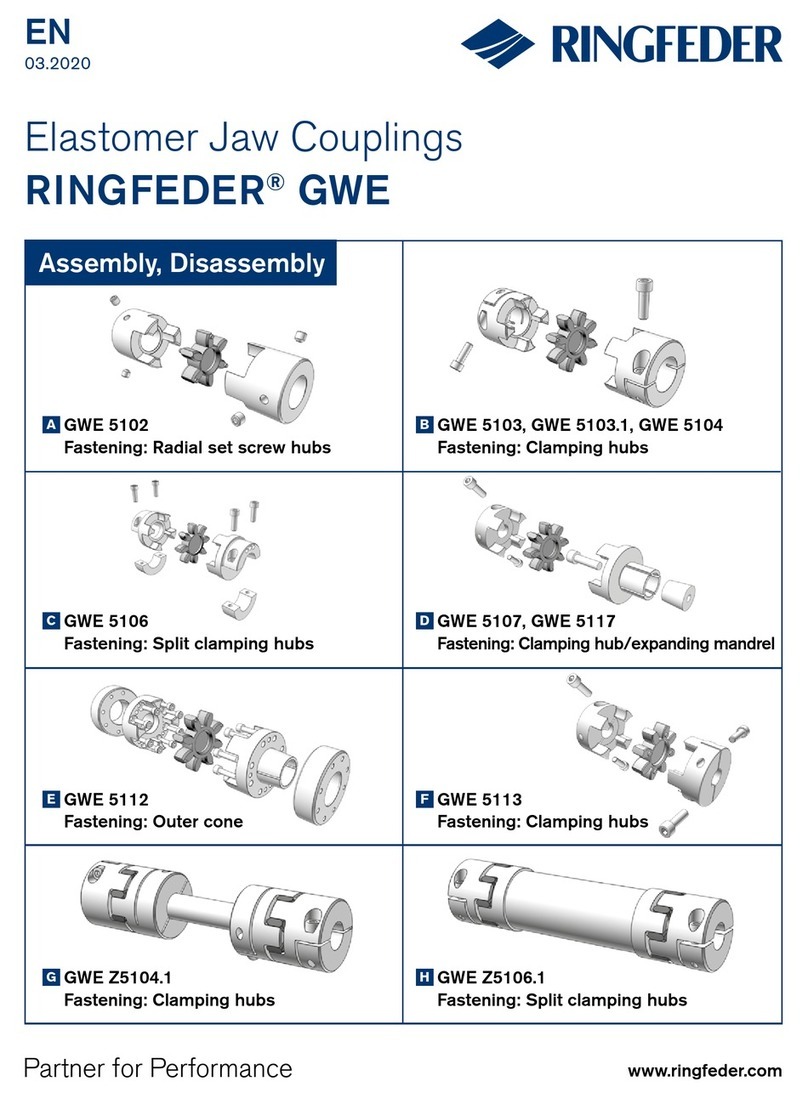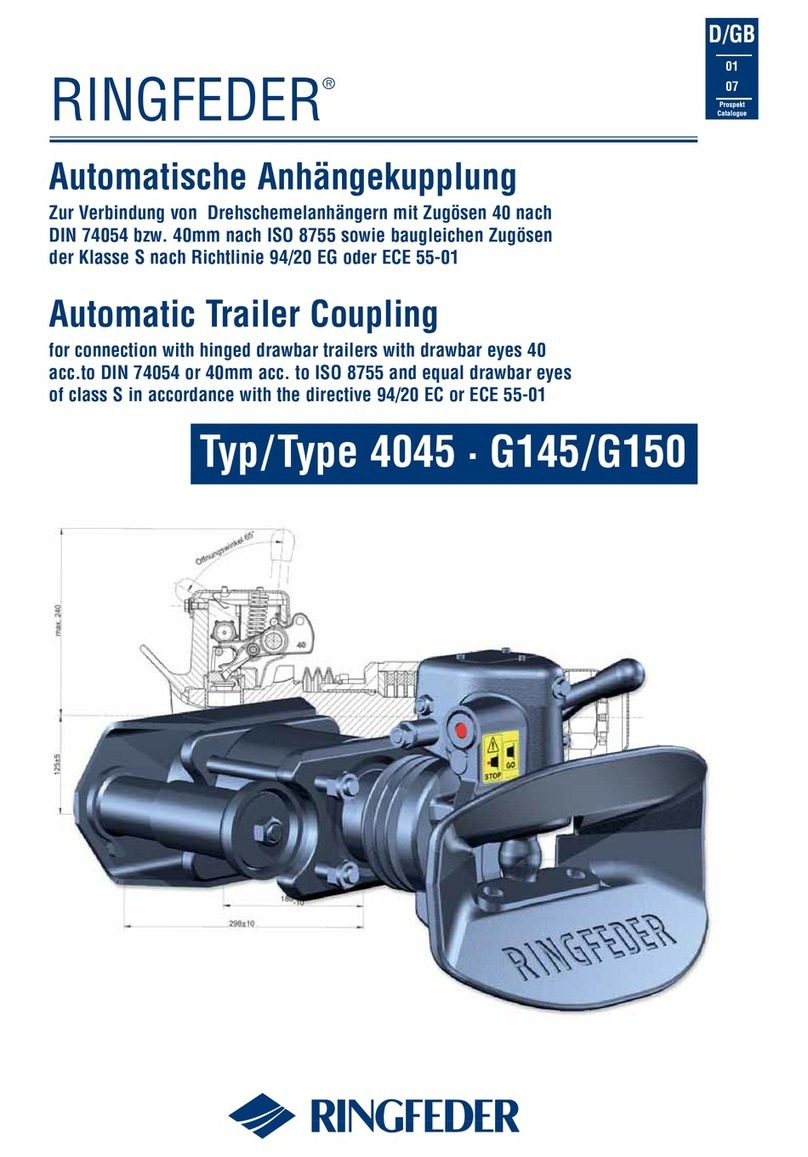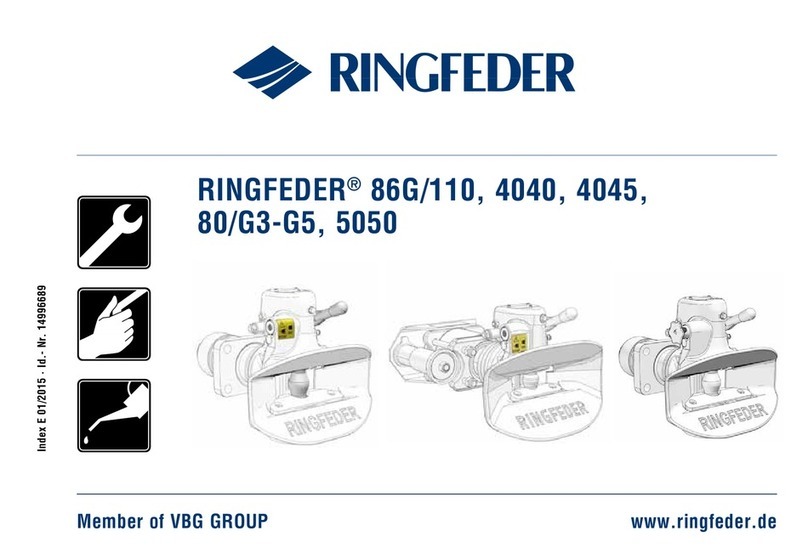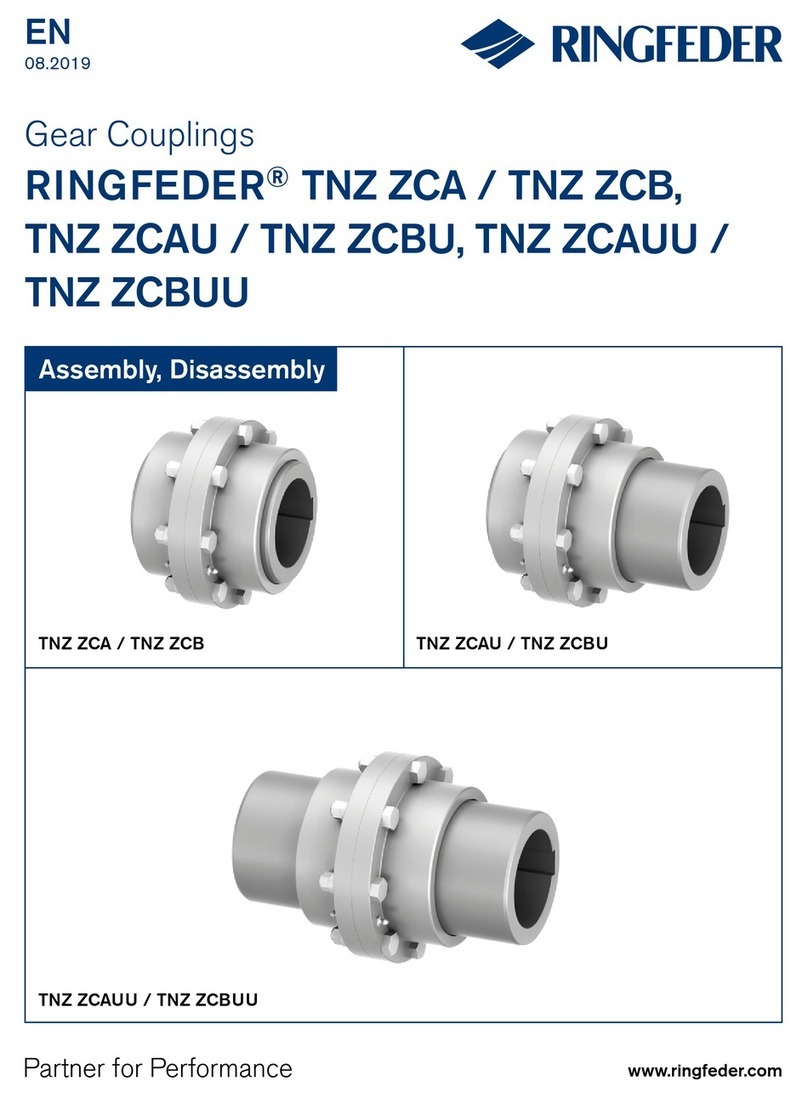
- 5 -
6 Technical Data
Table 1 Technical Data:
Size
TNM
LG
TKnom.
Pb72
[Nm]
TKmax
Pb72
[Nm]
TKnom.
Pb82
[Nm]
TKmax
Pb82
[Nm]
nmax
[rpm]
82 48 100 75 150 8000
97 96 200 150 210 7000
112 150 310 230 540 6000
128 250 500 380 650 5000
148 390 800 600 1350 4500
168 630 1300 980 1800 4000
194 1050 2000 1650 2400 3500
214 1500 3100 2400 4200 3000
240 2400 4800 3700 6200 2750
265 3700 7500 5800 8300 2500
295 4900 10000 7550 10500 2250
330 6400 13000 9900 14500 2000
370 8900 18200 14000 20000 1750
415 13200 27000 20500 27000 1500
480 18000 36000 28000 66000 1400
575 27000 54000 41000 97500 1200
Table 2
Technical Data RINGFEDER® TNM LG
Size
TNM
LG
d1
max
[mm]
d2
[mm]
d3
[mm]
d4
[mm]
d5
[mm]
d6
h8
[mm]
d7
[mm]
z
num-
ber
l1
[mm]
l2
[mm]
lG
[mm]
L
[mm]
S1
[mm]
S2
[mm]
m
[kg]
82-120 32 40 44,5 108 82 120 6,6 6 16 8 40 68 3,0 12 1,8
97-144 39 50 54,5 128 97 144 9,0 6 20 10 49 83 3,0 14 2,9
112-158 46 60 64,5 142 112 158 9,0 6 22 10 58 95 3,5 15 4,4
128-180 53 70 74,5 160 128 180 11,0 6 25 13 68 109 3,5 16 6,7
148-200 65 90 92,5 180 148 200 11,0 7 28 13 78 124 3,5 18 9,8
168-220 75 100 104,5 200 168 220 11,0 8 34 13 87 142 3,5 21 14,0
194-248 85 115 121,5 224 194 248 13,5 8 38 16 97 159 3,5 24 21,0
214-274 95 130 135,5 250 214 274 13,5 8 42 16 107 175 4,0 26 27,9
240-314 100 145 146,0 282 240 314 17,5 8 45 20 117 192 4,0 30 37,6
265-344 115 160 164,0 312 265 344 17,5 8 50 20 137 220 5,5 33 53,4
295-380 130 170 181,0 348 295 380 17,5 9 52 22 147 236 8,0 37 70,2
330-430 135 200 208,0 390 330 430 22,0 9 56 25 156 252 8,0 40 91,7
370-480 160 235 241,0 440 370 480 22,0 10 62 25 176 281 8,0 43 126,0
415-575 180 270 275,0 528 415 575 26,0 10 65 30 196 306 8,0 45 183,9
480-615 190 320 289,0 568 480 615 26,0 10 65 30 220 330 8,0 45 244,7
575-692 260 400 368 645 575 692 26,0 10 65 30 240 350 8,0 45 370,1
Fig. 2 RINGFEDER® TNM LG
RINGFEDER® TNM LG
BAWN 009-GBR-1
